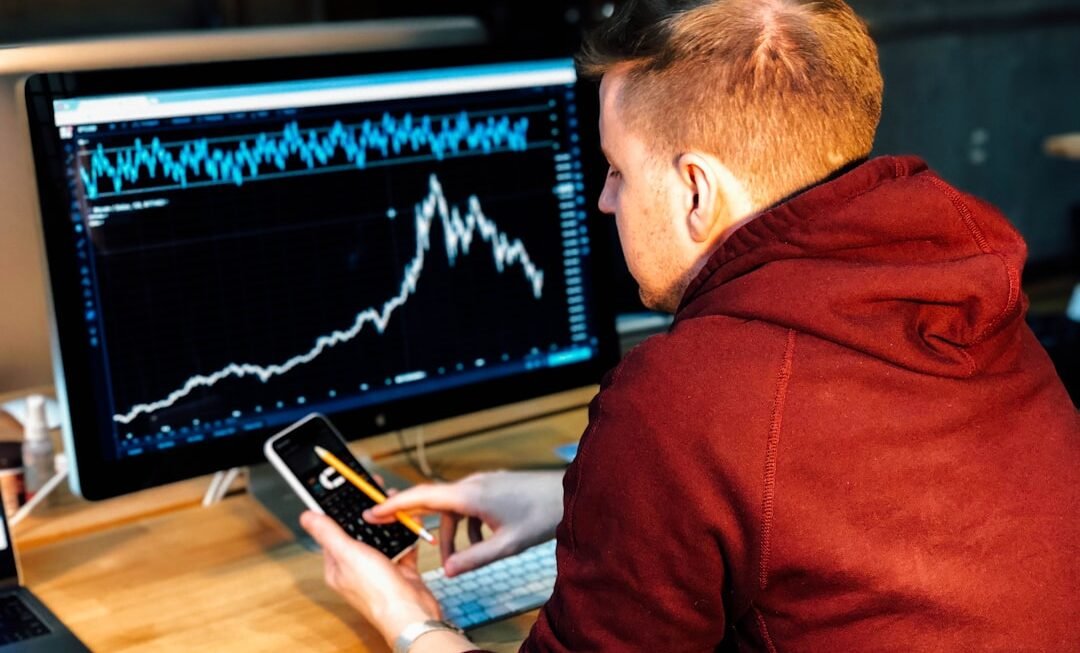High-frequency trading (HFT) has emerged as a dominant force in the financial markets over the past two decades, fundamentally altering the landscape of trading. This phenomenon is characterized by the use of sophisticated algorithms and high-speed data networks to execute a large number of orders at extremely fast speeds, often in fractions of a second. The rise of HFT can be traced back to the technological advancements in computing power and telecommunications, which have enabled traders to process vast amounts of market data and execute trades with unprecedented speed and efficiency.
The introduction of electronic trading platforms in the late 1990s marked a significant turning point, allowing traders to bypass traditional exchanges and directly access liquidity. As HFT gained traction, it attracted significant capital from institutional investors, hedge funds, and proprietary trading firms. These entities recognized the potential for profit in exploiting minute price discrepancies that exist for only milliseconds.
The ability to leverage technology to gain a competitive edge has led to an arms race among firms, each striving to develop faster algorithms and more efficient trading strategies. The result has been a dramatic increase in trading volumes, with HFT accounting for a substantial portion of total market activity. According to estimates, HFT firms are responsible for executing over 50% of all equity trades in the United States, underscoring their influence on market dynamics.
Key Takeaways
- High-frequency trading has seen a significant rise with the advancement of technology and the use of algorithms to execute trades at lightning speed.
- Artificial intelligence plays a crucial role in high-frequency trading by analyzing large volumes of data and making split-second decisions to capitalize on market opportunities.
- AI-powered high-frequency trading offers advantages such as increased efficiency, reduced human error, and the ability to identify complex patterns in market data.
- However, challenges and risks of AI-powered high-frequency trading include potential system failures, market manipulation, and the amplification of market volatility.
- AI is revolutionizing high-frequency trading strategies by enabling more sophisticated and adaptive trading algorithms that can quickly adapt to changing market conditions.
The Role of Artificial Intelligence in High-Frequency Trading
Artificial intelligence (AI) has become an integral component of high-frequency trading, enhancing the capabilities of algorithms and enabling traders to make more informed decisions. AI technologies, particularly machine learning and deep learning, allow HFT firms to analyze vast datasets, identify patterns, and adapt their strategies in real-time. By leveraging historical market data, AI can uncover correlations and trends that may not be immediately apparent to human traders.
This analytical prowess enables firms to optimize their trading strategies, improving execution quality and profitability. Moreover, AI’s ability to process unstructured data—such as news articles, social media sentiment, and economic indicators—further enriches the decision-making process. For instance, natural language processing (NLP) techniques can be employed to gauge market sentiment based on news headlines or social media chatter, providing traders with insights that can influence their trading decisions.
As a result, AI-powered HFT systems are not only faster but also more intelligent, capable of adapting to changing market conditions and responding to new information almost instantaneously.
Advantages of AI-Powered High-Frequency Trading
The integration of AI into high-frequency trading offers several advantages that enhance both performance and risk management. One of the most significant benefits is the ability to process and analyze vast amounts of data at lightning speed. Traditional trading strategies often rely on historical data and predefined rules; however, AI can continuously learn from new data inputs, allowing it to refine its models and improve accuracy over time.
This adaptability is crucial in the fast-paced world of HFT, where market conditions can change rapidly. Additionally, AI-powered systems can execute trades with precision that is difficult for human traders to match. By utilizing advanced algorithms that account for multiple variables simultaneously, these systems can identify optimal entry and exit points with remarkable accuracy.
This precision not only enhances profitability but also minimizes slippage—the difference between expected and actual trade execution prices—thereby improving overall trading performance. Furthermore, AI can help mitigate risks by identifying potential anomalies or market disruptions before they escalate, allowing traders to adjust their strategies proactively.
Challenges and Risks of AI-Powered High-Frequency Trading
Despite its numerous advantages, AI-powered high-frequency trading is not without its challenges and risks. One significant concern is the potential for algorithmic errors or “flash crashes,” where a sudden spike in trading activity leads to extreme volatility and market dislocation. Such events can occur when algorithms react to market signals in unintended ways, exacerbating price movements and causing significant losses for traders.
The infamous Flash Crash of May 6, 2010, serves as a stark reminder of the vulnerabilities inherent in automated trading systems. Moreover, the reliance on AI introduces additional complexities related to model risk. As algorithms become more sophisticated, they may inadvertently incorporate biases or flawed assumptions that can lead to poor decision-making.
The opacity of many AI models—often referred to as “black boxes”—can make it challenging for traders to understand how decisions are being made. This lack of transparency raises concerns about accountability and the potential for systemic risks within financial markets. Additionally, as competition intensifies among HFT firms, there is a risk that some may prioritize speed over sound risk management practices, further heightening the potential for adverse outcomes.
How AI is Revolutionizing High-Frequency Trading Strategies
AI is revolutionizing high-frequency trading strategies by enabling firms to develop more nuanced approaches that go beyond traditional quantitative methods. Machine learning algorithms can analyze historical price movements alongside a multitude of other factors—such as macroeconomic indicators, geopolitical events, and even weather patterns—to create predictive models that inform trading decisions. This multifaceted approach allows traders to capture opportunities that may have previously gone unnoticed.
Furthermore, reinforcement learning—a subset of machine learning—has gained traction in HFT as it allows algorithms to learn from their own actions through trial and error. By simulating various trading scenarios and adjusting strategies based on outcomes, these algorithms can optimize their performance over time. This dynamic learning process enables firms to adapt quickly to changing market conditions and refine their strategies based on real-time feedback.
As a result, AI-driven HFT strategies are becoming increasingly sophisticated, incorporating elements of behavioral finance and market psychology into their decision-making processes.
The Impact of AI on Market Liquidity and Efficiency
The proliferation of AI-powered high-frequency trading has had a profound impact on market liquidity and efficiency. By facilitating rapid trade execution and providing continuous quotes, HFT firms contribute significantly to market depth and liquidity. This increased liquidity benefits all market participants by narrowing bid-ask spreads and reducing transaction costs.
In essence, HFT acts as a stabilizing force in the markets by ensuring that buyers and sellers can transact quickly and efficiently. Moreover, the efficiency gains brought about by AI-driven trading strategies have led to improved price discovery mechanisms within financial markets. As algorithms analyze vast amounts of information in real-time, they help ensure that prices reflect available information more accurately.
This enhanced price efficiency reduces the likelihood of mispricings and contributes to a more stable market environment. However, it is essential to recognize that while increased liquidity can be beneficial, it may also lead to challenges such as increased volatility during periods of market stress when HFT firms may withdraw from providing liquidity.
Regulatory Concerns and Oversight of AI-Powered High-Frequency Trading
The rapid growth of high-frequency trading has prompted regulatory scrutiny as authorities seek to understand its implications for market stability and investor protection. Regulators are particularly concerned about the potential for market manipulation and the systemic risks posed by algorithmic trading strategies. In response, various jurisdictions have implemented measures aimed at enhancing transparency and oversight within the HFT space.
For instance, the European Union’s Markets in Financial Instruments Directive II (MiFID II) introduced stringent reporting requirements for algorithmic trading activities, mandating firms to provide detailed information about their trading algorithms and risk management practices. Similarly, the U.S. Securities and Exchange Commission (SEC) has focused on improving market surveillance capabilities to detect irregular trading patterns associated with HFT activities.
These regulatory efforts aim to strike a balance between fostering innovation in financial markets while ensuring that appropriate safeguards are in place to protect investors and maintain market integrity.
The Future of High-Frequency Trading: AI’s Role
Looking ahead, the future of high-frequency trading will likely be shaped by continued advancements in artificial intelligence and machine learning technologies. As computational power increases and data availability expands, HFT firms will have access to even more sophisticated tools for analyzing market dynamics. This evolution will enable them to refine their strategies further and explore new avenues for profit generation.
Moreover, as financial markets become increasingly interconnected globally, AI will play a crucial role in navigating complex cross-border trading environments. Algorithms capable of processing diverse datasets from multiple markets will allow firms to identify arbitrage opportunities across different asset classes and geographies. However, this evolution will also necessitate ongoing collaboration between industry participants and regulators to ensure that the benefits of AI-driven HFT are realized while mitigating potential risks.
Ethical Considerations in AI-Powered High-Frequency Trading
The rise of AI-powered high-frequency trading raises important ethical considerations that warrant careful examination. One primary concern revolves around fairness in the markets; as HFT firms leverage advanced technologies to gain competitive advantages, questions arise about whether retail investors are at a disadvantage when competing against these sophisticated systems. The disparity in access to information and technology can create an uneven playing field that undermines the principles of fair competition.
Additionally, there are ethical implications related to algorithmic decision-making processes. As AI systems become more autonomous in executing trades based on predefined parameters or learned behaviors, accountability becomes a critical issue. If an algorithm makes a decision that results in significant market disruption or financial loss, determining responsibility can be challenging.
This ambiguity raises questions about how firms should approach risk management and ethical considerations when developing AI-driven trading strategies.
The Intersection of AI, High-Frequency Trading, and Financial Markets
The intersection of artificial intelligence, high-frequency trading, and financial markets represents a transformative shift in how trading is conducted today. As these elements converge, they create new opportunities for innovation while also presenting challenges that require careful navigation. The integration of AI into HFT has led to enhanced efficiency in trade execution and improved liquidity; however, it has also introduced complexities related to risk management and regulatory compliance.
Furthermore, this intersection is reshaping the competitive landscape within financial markets as firms invest heavily in technology to gain an edge over rivals. The race for technological superiority has resulted in increased collaboration between financial institutions and technology companies, fostering an environment where cutting-edge solutions are developed at an accelerated pace. As this trend continues, it will be essential for stakeholders across the industry—including regulators—to engage in ongoing dialogue about best practices and standards that promote responsible innovation.
The Evolution of AI-Powered High-Frequency Trading in a Post-Pandemic World
The COVID-19 pandemic has had far-reaching effects on global financial markets, prompting shifts in trading behavior that have implications for high-frequency trading strategies powered by artificial intelligence. During periods of heightened volatility and uncertainty, many HFT firms adapted their algorithms to respond more effectively to rapidly changing market conditions. The pandemic underscored the importance of agility in trading strategies as firms sought to capitalize on emerging trends while managing risk.
In a post-pandemic world, the evolution of AI-powered high-frequency trading will likely continue along this trajectory of adaptation and innovation. As markets stabilize and recover from the disruptions caused by the pandemic, firms will leverage lessons learned during this period to refine their approaches further. Additionally, the growing emphasis on sustainability and responsible investing may influence HFT strategies as firms seek to align their activities with broader societal goals while navigating evolving regulatory landscapes.
The interplay between artificial intelligence and high-frequency trading will remain a focal point for industry participants as they strive to harness technology’s potential while addressing ethical considerations and regulatory challenges inherent in this rapidly evolving landscape.












